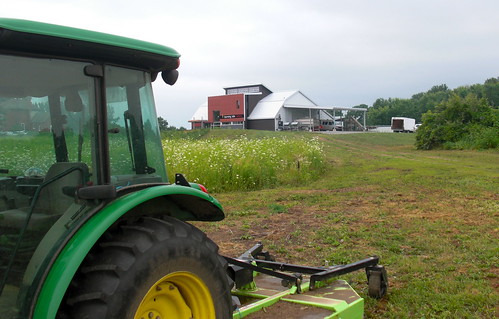
PORT DOVER, Ont. — It was once paved in gold, its wide swaths of land covered in the tall, leafy tobacco plants and the drying kilns that defined Norfolk County in southwestern Ontario on the north shore of Lake Erie. It was a booming farm community, with lavish estates and signs of wealth at every corner of this idyllic and pastoral region.
Such was the influence of the tobacco farmers, in those glory years, that every inch of roadway — from concessions to county roads —were paved so the truckers hauling out their precious cargo had a comfortable, smooth ride to market.
Those heydays are long gone for tobacco, at least for most of the farmers who made their living growing a product that more and more people were shunning and governments were taxing out of existence. In 2008 the Canadian government gave farmers $300 million to buy out their entire tobacco quotas on the condition they turn to something else to farm be it a new crop or raising livestock.
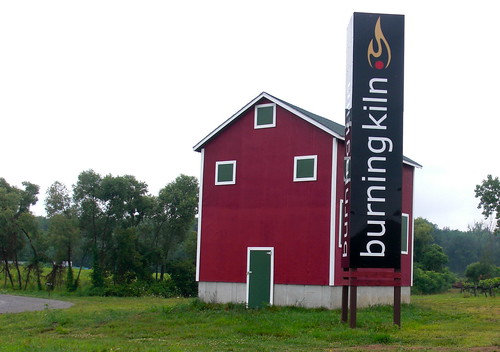

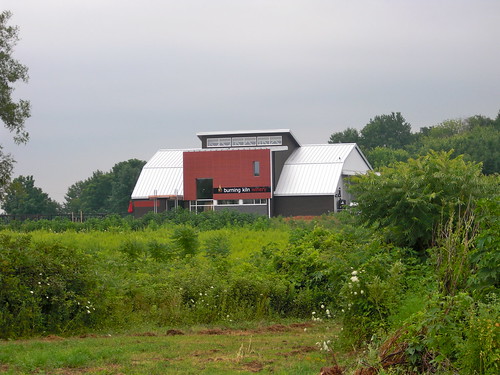
It ended generations of tobacco farming for most families but also opened up opportunities for those who chose to take the government’s offer.
The landscape is still dotted with the lush rows of tobacco swaying in the breeze, but only a fraction of what was once the “tobacco belt” remains in Norfolk County.
There is a sense of renewal in this rural, farming belt. Tobacco is being replaced with soybeans, corn, wheat, rye, alfalfa, ginseng, orchard fruits, field fruits and all manner of livestock.
And out of it all, Ontario’s newest wine region has emerged, not yet officially defined, but moving ahead at full speed as farmers and entrepreneurs come together to forge a new, healthier, path to prosperity.
The push is being felt in a scattered approach, in far-flung corners of the county, down unassuming concession roads and in the unlikeliest of places. This is no Niagara, no, not yet. But it shows signs in the quality of wines of becoming an important wine and destination region.

Driving the bus for this journey into a new revolution is the Burning Kiln winery at Turkey Point near the small town of St. Williams, about a 30 km drive from the pretty summer lakeside town of Port Dover. Seven partners came together and saw potential for the former tobacco fields and made a large investment in vineyards and a spectacular winery and brought in winemaking expertise from Niagara to kick-start the industry in Norfolk County. Burning Kiln isn’t the first to make a foray into wine here, but it is the first to raise the bar in terms of making 100% regional VQA wines that have the quality to draw visitors to this start-up wine region and to encourage others to follow a similar path.
The winery only opened its doors for the first time this spring, selling a brand new portfolio of wines as unique in flavour as the concept is for its vision of a destination winery and surrounding eco-playground.
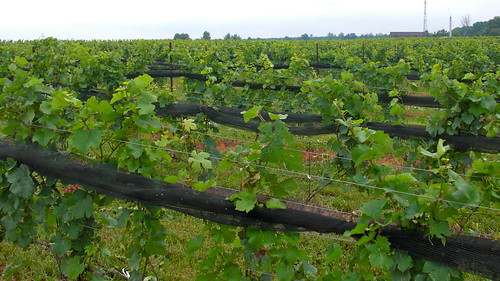
The seven partners — Frank DeLeebeeck, Mike McArthur, Scott Fixter, Dave Pond, Todd Saunders, Steve Malo and Gord Malo — combined their many skills and passion for people and place to create a destination full of wine and adventure.
The Burning Kiln name reflects Norfolk County’s past history of growing tobacco and the huts that were used to dry and cure the product. An old original kiln is the beacon that guides visitors into the 5,200 square foot modern winery constructed from the frame of the original pack barn where the tobacco stripping occurred. From the patio you get beautiful views of Lake Erie and sand beaches in the distance.
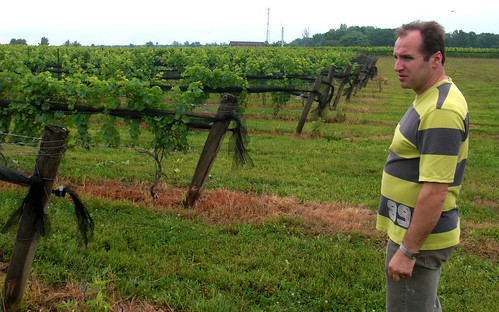
The idea from the beginning was to incorporate aspects of the tobacco trade into the wine making process.
Andrzej Lipinski, a winemaker from Niagara, was brought in to offer his expertise in crafting wines using an old Italian tradition of drying grapes to give them concentration and complexity.
The idea was to dry harvested grapes in the old, mostly abandoned (or purchased for a fraction of their worth) kilns that were previously used to cure tobacco plants.
This is a specialty of Lipinski who uses this adopted Italian “appassimento” style at both Colaneri and Organized Crime wineries in Niagara to critical success.

The winery has 22 acres of land under vine and has decided to grow traditional vinifera grapes such as Cabernet Franc, Pinot Noir, Merlot, Petit Verdot, Riesling, Chardonnay, Pinot Gris and, perhaps not so traditional, Savagnin. All the red wines and most of the white wines undergo some kiln drying in the process.
Lipinski wants all the new wineries in the region to use only tobacco kiln-dried grapes to make their wines, as their stamp on a regional style that will draw tourists and wine lovers to the area.
Lipinski says the sandy soil in the region produces fruity, aromatic wines but they lack complexity. The drying of the grapes provides the structure and concentration they need to be successful as a wine-producing region, he says.
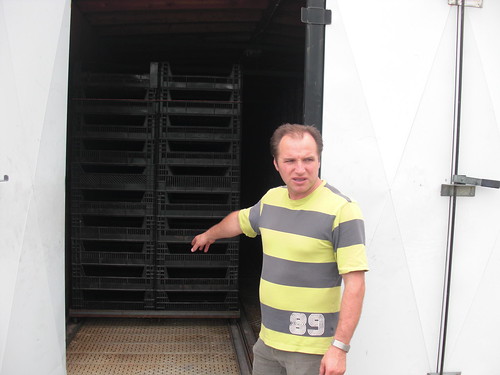
“What we want is to make a name for the region on drying grapes. It needs to be different for them,” says Lipinski. “And it has to be everybody” using the technique.
“We’re hoping more people see what we’re doing here and do it themselves,” says Lipinski.
Drying the grapes can turn lean wines into riper, more concentrated wines.
One of the partners, Mike McArthur, a lawyer by trade, says drying grapes “gives us the advantage” to make better wines in the region.
“We can ripen our fruit in this way and we don’t have to worry about what the season gives us. It’s truly Canadian, adopt to what it is.”

McArthur and the other partners are working hard to create an appellation for what it calls the South Coast Wines association. Regular meetings have spurred great debate on what direction it should take and what their goals are.
There are only nine wineries making wine in the region with three or four more about to come on stream. Some make just fruit wine, most don’t pay to have their wines stamped with the Ontario wine standard VQA and others are happy in their small world of selling wines one by one to anyone who passes by their farm.
A wine region can’t gain appellation status until it has 125 acres under vine. McArthur says Norfolk County is about 50 acres and two years away from an official recognition but that won’t slow down the progress at Burning Kiln.
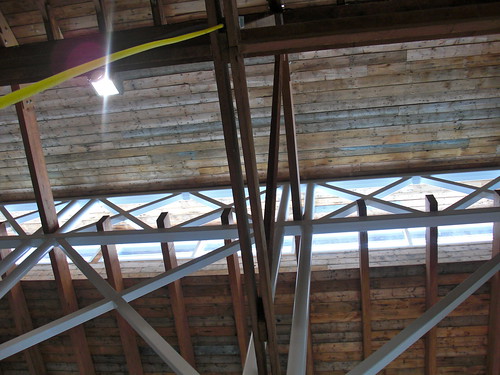
Since opening in the spring, a steady flow of customers have beaten down the door to try the wines, eat beef burger sliders or pork tenderloin with sweet potato and salsa verde on the patio or walk the grounds of the old tobacco farm that has been environmentally rehabilitated.
The partners hope the winery is a draw for tourists and, if that’s not enough, they have built an eco-adventure park right across the street complete with a two and half hour zipline course, two suspension sky bridges, 14 platforms and a 40-foot rappel with stunning views overlooking the Long Point Bay World Biosphere and Turkey Point Marsh. There’s also stargazing at the Long Point Observatory, wilderness suites in deluxe guest tents complete with running water, outdoor shower, your own bird house and king size bed, guided canoe and kayak tours on Big Creek and some of the most amazing hiking and biking trails you’ll find anywhere.
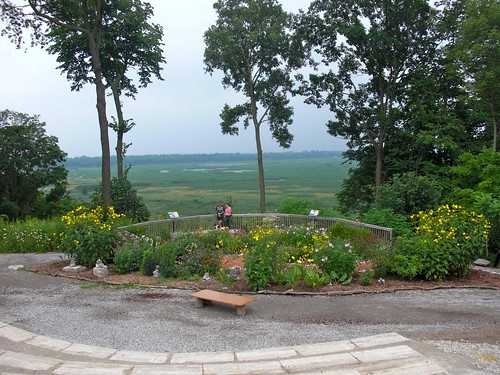

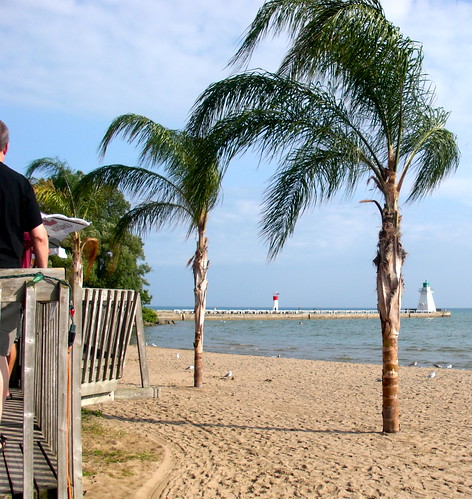
And they also want the other wineries in the region to be a part of the excitement that’s just beginning to build.
You don’t want six wineries here. You want 36 wineries,” says McArthur. “We need the critical mass.”
Wine reviews from Burning Kiln (note: all wines are VQA approved and some wines use a combination of estate and Niagara grapes)
Burning Kiln Riesling 2010 ($20, 87 points) — From 50% estate grapes and 50% purchased Niagara grapes, this is made in off-dry style with fresh citrus and peach aromas. It’s ripe and loaded with lemon-lime, peach and honey notes.
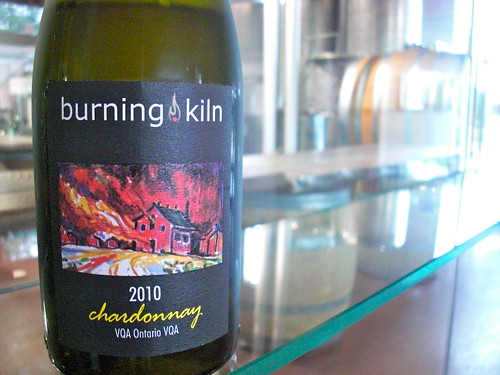
Burning Kiln Cureman’s Chardonnay 2010 (price NA, 89 points, released this fall) — Lovely oak-wood-spice aromas with tropical fruit, nutmeg and candied apple notes. Very plush and creamy on the palate with ripe, rich tropical and pear fruits.
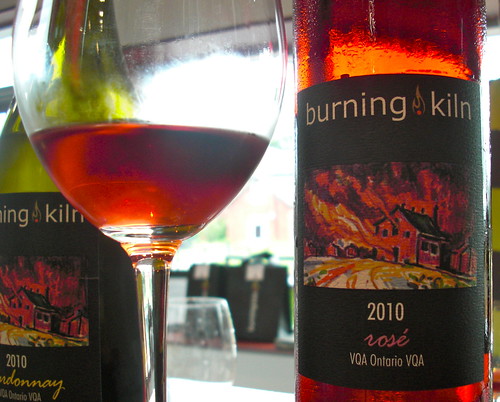 Burning Kiln Rose 2010 ($18, 87 points) — A lot happening in this wine. It’s 100% South Coast Cabernet Franc that’s barrel fermented using 10% kiln dried grapes. Great nose of strawberries, spice and cherries. It has bite on the palate with the red fruits lifted by sweet spices.
Burning Kiln Rose 2010 ($18, 87 points) — A lot happening in this wine. It’s 100% South Coast Cabernet Franc that’s barrel fermented using 10% kiln dried grapes. Great nose of strawberries, spice and cherries. It has bite on the palate with the red fruits lifted by sweet spices.
Burning Kiln Pinot Noir 2010 ($35, 89 points) — Made from 100% kiln dried grapes that were sourced 50% from the estate and 50% from Niagara. The nose shows barnyard, black cherry, sweet herbs and tobacco, cocoa and floral notes. It’s rich and layered on the palate with concentrated red fruits, obvious tannins and oak stylings. One to hold in the cellar for five years.
Burning Kiln Cabernet Franc 2010 ($23, 87 points) — A lovely nose of cherry, cedar, smoke and spice. Nice depth of flavour to go with smoky fruits, plum, tobacco and a touch of roasted herbs on the finish.
Burning Kiln Strip Room 2010 ($30, 87 points) — A blend of 60% Merlot (100% dried fruit sourced from Niagara) and 40% Cabernet Franc (not kiln dried, from the estate) with a meaty nose of bramble, red fruits and blackberry. There’s a sweet spice kick on the palate to go with black cherries, earth and plush tannins. Quite enjoyable.
Burning Kiln Kiln Hanger 2010 ($40, barrel sample, released in 2012, 90+ points) — This is a “wow” wine, made from 100% kiln dried Cabernet Franc sourced 50% from Niagara and 50% estate fruit with 18 months of 100% French oak and finished at 16.5% alcohol. The nose explodes with fudge, red fruits and layers of spice. The dense cherry fruit feels sweet on the palate from the concentration but the wine is completely dry. It’s layered in oak and spice and tannins. This will be a monster once released next year.
•••
About 20 minutes away, in far away corner of the county, on a lonely county road, and without signs pointing the way, the Florence Estate Winery emerges. It’s a beautiful spot, nestled among vineyards and surrounded by acres of spectacular Carolina Forests.
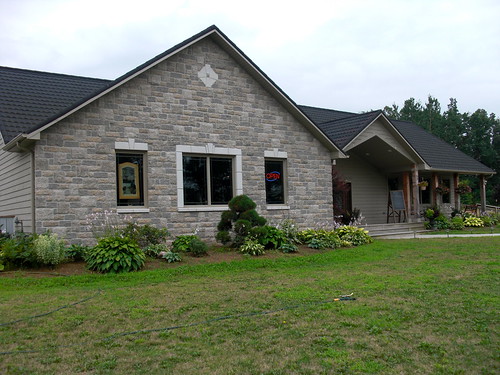
It’s an unpretentious winery but has a lovely dining room and tasting area. The owners, Margaret and Terry Marshall, got out of the tobacco growing business in 1988, sold off most of the land they had accumulated but kept the original farm and land and decided to plant grapes and start a winery.
“We wanted to do something that would leave a mark on the family,” says Margaret. She says it was a “steep learning curve” to go from tobacco to grapes but sought the help of Niagara grape grower Doug Hernder who had this sage advice for the Marshalls when they started out: “Growing grapes isn’t difficult. You just need to learn how to do it.”
Florence winery grows about 14 acres of vines, planted to Chardonnay, Marechal Foch, Baco Noir, Gewurztraminer, Vidal, Pinot Noir, Riesling and Lucy Khulmann. It opened its doors to the retail store in 2008 but they don’t see a “huge amount of traffic down this road,” says Margaret. “But we do have a loyal biker following,” she says of the many motorcyclists who pass by en route to Port Dover. “Unfortunately, they can only carry two bottles of wines with them.”

The Marshalls like the idea of the West Coast Wines association but wouldn’t consider the expense of getting VQA approval for her wines until it’s declared an official appellation.
“Lots of things have been tried down here,” she says. “It’s the old story of getting farmers together. It doesn’t always work.”
Wine reviews from Florence (note: all wines are not VQA approved but are made from 100% estate fruit):
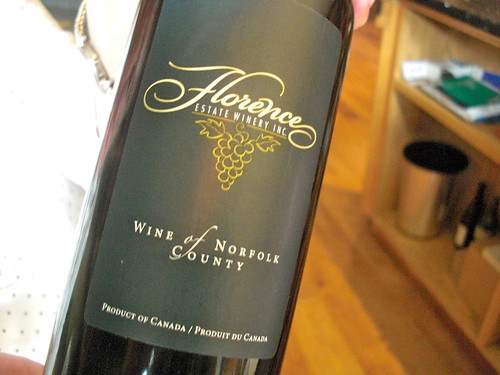 Florence Vidal 2009 ($12, 84 points) — A crisp summer sipper with fresh apple and citrus aromas. It’s quite tart and zippy on the palate with bright acidity and citrus/apple goodness.
Florence Vidal 2009 ($12, 84 points) — A crisp summer sipper with fresh apple and citrus aromas. It’s quite tart and zippy on the palate with bright acidity and citrus/apple goodness.
Florence Marechal Foch 2007 ($14, 84 points) — A meaty, savoury nose with red fruits and spice. Good verve on the palate with pepper blackberry and cherry flavours and decent spice.
Florence Baco Noir 2008 ($15, 83 points) — Smoky red fruits and wild berries on the nose with some odd spice notes. In the mouth, this Baco is plumy and lifted by racy acidity but lacking a bit in varietal character.
•••
Driving northeast, through the quiet rural countryside, past farms and quaint tiny towns, east of the main centre of Simcoe, you will find the rustic winery called Villa Nova.
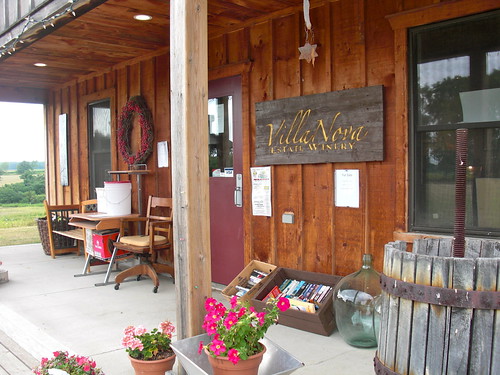
Phil Ryan, a retired civil servant who has no ties to the tobacco industry and has always been an amateur winemaker, has some of the oldest vines in Norfolk County, dating back to 1996.
He says he got serious about winemaking in 2002, built his winery in 2006 and started selling wine in 2007.
He, too, sought out the help of a Niagara winemaker, Jim Warren, who was teaching at Niagara College at the time and helped Phil with that first vintage.
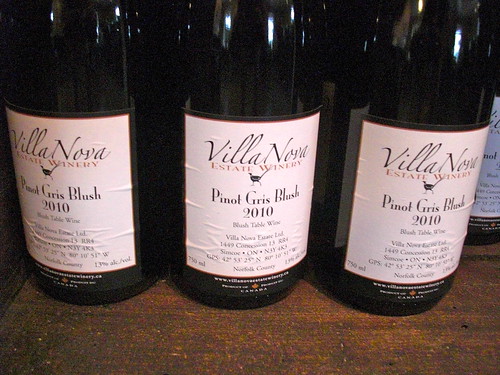 “It’s fairly dramatic what’s going on here,” says Ryan. “The potential to grow grapes here has been improved with global warming.”
“It’s fairly dramatic what’s going on here,” says Ryan. “The potential to grow grapes here has been improved with global warming.”
That was the business plan, he says somewhat tongue-in-cheek: “Rely on global warming.”
Ryan farms 10 acres of grapes with a dizzying array of varieties from Riesling, Chardonnay, Cabernet Sauvignon, Merlot, Vidal and Baco Noir to 40 other varieties, many of them seldom planted hybrid grapes, that he’s experimenting with and growing just to see if they’ll turn out to be worthwhile to plant in the region. He’s like a mad scientist, mixing and matching varieties to create a wide selection of funky wines with names like Aenigma, Dore Blanc, Mystery of HRIO, Norfolk Red and Chambourcin — “a dry red table wine from our vineyard that tastes white.”
Ryan is a character. He’s not sure if he buys into the whole appellation thing for Norfolk County. He has a bit of a problem with VQA in that the designation of quality organization doesn’t recognize many of the hardy French hybrids he grows as VQA worthy.
He’s a small production, niche winery with few rules in place to govern the way he makes wines (although all his wines must meet LCBO quality standards or he can’t sell them). His customers know what they’re getting, says Ryan, because “I sell my wines over the counter to them.”
But he does see the value in an appellation for the region, to draw more visitors that will hopefully translate to selling more wine. Once Norfolk County is established as its own designated viticultural area he said he would likely join the VQA program for some of his vinifera wines.
Wine reviews from Villa Nova (note: all wines are from estate fruit and not VQA approved. They also make a full range of very nice fruit wines):
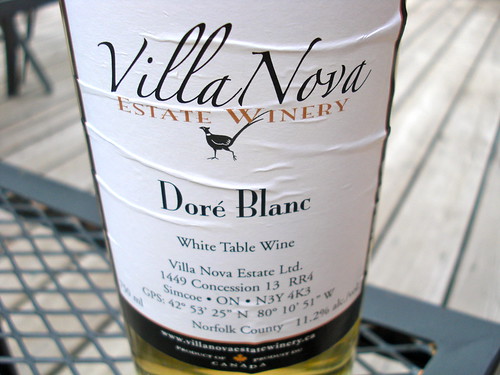 Villa Nova Pinot Gris Blush 2010 ($14, 86 points) — A really nice rose style wine with apple, peach and melon aromas. It’s an off-dry wine with juicy-creamy fruits and just a touch of spice.
Villa Nova Pinot Gris Blush 2010 ($14, 86 points) — A really nice rose style wine with apple, peach and melon aromas. It’s an off-dry wine with juicy-creamy fruits and just a touch of spice.
Villa Nova Dore Blanc 2010 ($10, 84 points) — A blend of Vidal, Muscat and an undisclosed hybrid that has been made specifically to go with Lake Erie perch and pickerel. It is gorgeous in that regard with crisp, tart, bone-dry lemon-lime fruit and bright acidity. Just add the fish.
Villa Nova Frontanac Rose 2010 ($12, 85 points) — A nose of crab apple, red currants and cherries. It’s fresh and juicy in the mouth. A perfect summer porch sipper.


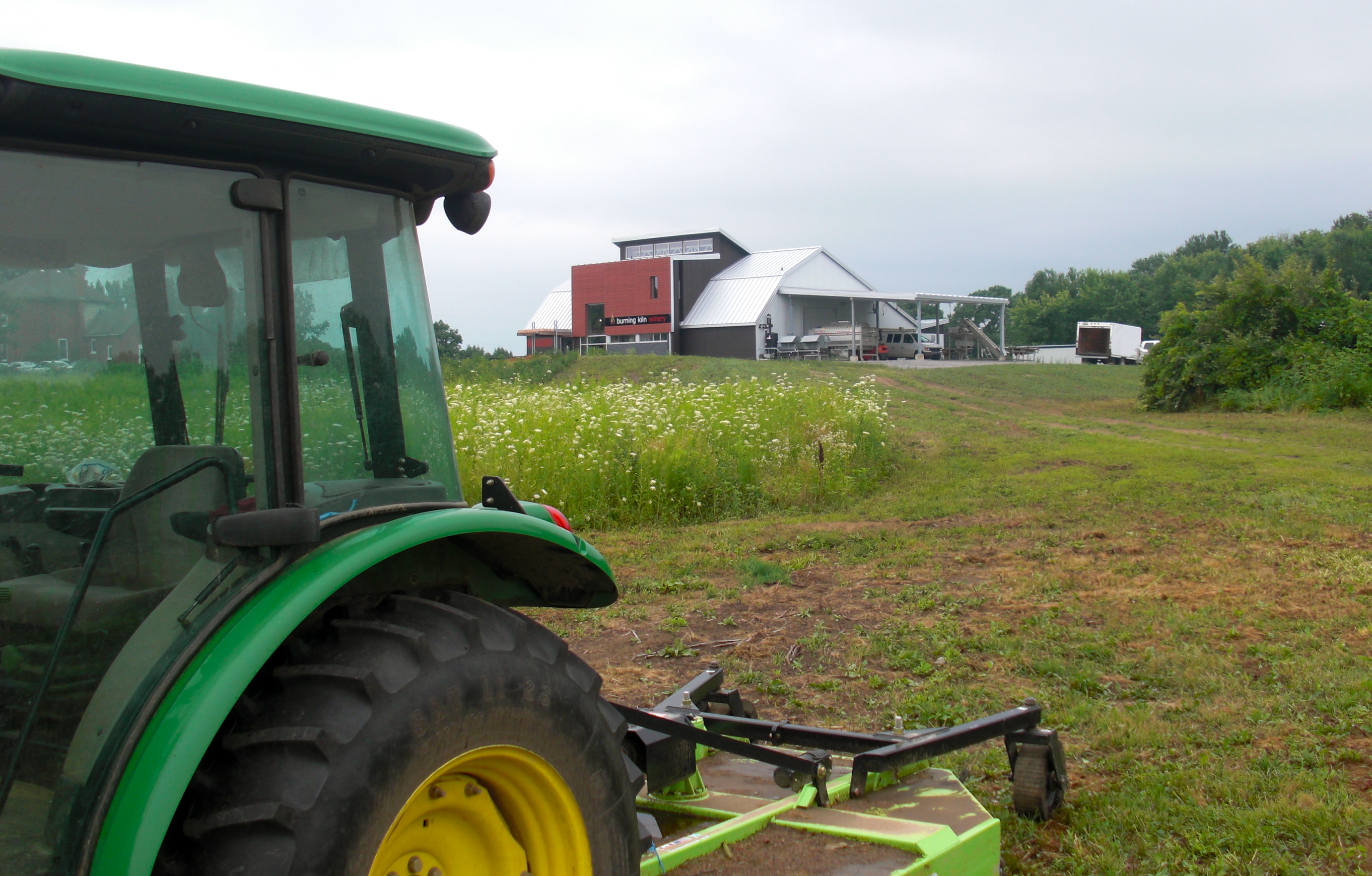




Just enjoyed a great tour of the Burning Kiln Winery and thoroughly enjoyed hearing the story in great detail. John was a wonderful tour guide – very impressive. We had visitors from Northern Ireland with us and they thoroughly enjoyed the experience.